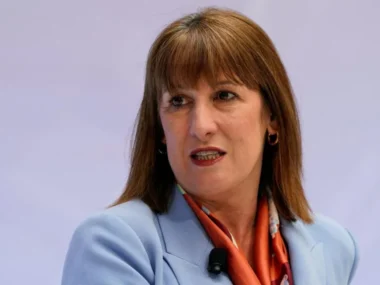The World Bank suggests that if the conflict in the Middle East escalates, oil prices could potentially exceed $150 per barrel.
A protracted conflict in the Middle East has the potential to trigger significant increases in energy and food prices, reminiscent of the price spikes observed following the Russian invasion of Ukraine just a year ago.
At present, oil prices remain relatively stable at approximately $90 per barrel, with predictions of a decline. However, the World Bank has cautioned that this outlook could change rapidly.
Under its worst-case scenario, the World Bank anticipates a situation comparable to the oil crisis of the 1970s, which could drive oil prices to a range between $140 and $157 per barrel.
In October 1973, oil-producing nations in the Arab region curtailed exports to the United States and other countries that supported Israel during the Yom Kippur war, resulting in a substantial increase in prices.
Indermit Gill, the chief economist at the World Bank, stated, “The latest conflict in the Middle East comes on the heels of the biggest shock to commodity markets since the 1970s – Russia’s war with Ukraine. That had disruptive effects on the global economy that persist to this day.”
He emphasized that policymakers must remain watchful, as the scenario of a “dual energy shock,” impacting both oil and gas supplies, has not been witnessed for decades.
While European gas prices surged this month due to concerns about potential pipeline disruptions near the Gaza Strip affecting global supplies, oil markets have largely not been significantly affected by the conflict thus far. Benchmark Brent prices fell more than 1% to around $89 per barrel on Monday.
If the Middle East crisis does not escalate, current projections indicate that wholesale prices could drop to $81 per barrel.
The World Bank noted that the global economy is better equipped to handle a supply shock compared to past Middle East conflicts, but it also cautioned that the global economy is still recovering from the energy price spikes witnessed last year.
Higher energy prices can lead to elevated inflation, as seen following Russia’s invasion of Ukraine, with a ripple effect on other commodities.
Ayhan Kose, deputy chief economist at the World Bank, commented, “Higher oil prices, if sustained, inevitably mean higher food prices,” and added that “if a severe oil-price shock materializes, it would push up food price inflation that has already been elevated in many developing countries. At the end of 2022, more than 700 million people – nearly a tenth of the global population – were undernourished.”
The Bank is concerned that an escalation of the current conflict could exacerbate food insecurity, impacting not only the region but also the world at large.
In a more favorable scenario outlined by the Bank, a minor disruption would reduce global oil supply by 500,000 to two million barrels per day. In this case, oil prices could range from $93 to $102 per barrel, according to the Bank’s analysis.











